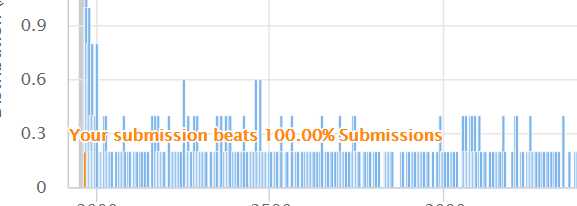标签:插入代码 返回值 哈哈哈 等于 linked desc end 返回 app
Given a linked list and a value x, partition it such that all nodes less than x come before nodes greater than or equal to x.
You should preserve the original relative order of the nodes in each of the two partitions.
Given 1->4->3->2->5->2->null and x = 3,
return 1->2->2->4->3->5->null.
看到“partition”,还以为是快速排序呢。。。题目的意思是,给一个链表,再给一个数。将链表中的数分为两个类:小于x、大于等于x。返回值为该类型的ListNode,将小于x的放前面,大于等于x的,放在后面。先贴给图:

哈哈哈,其实思路也挺简单的,不知道怎么就成最快的了。
思路:按照我分析的,将原链表拆分成两个链表,最后再合并起来。代码如下:
/** * Definition for ListNode * public class ListNode { * int val; * ListNode next; * ListNode(int x) { * val = x; * next = null; * } * } */ public class Solution { /** * @param head: The first node of linked list * @param x: An integer * @return: A ListNode */ public ListNode partition(ListNode head, int x) { // write your code here //放值小于x的结点,lp为插入low链表时的尾指针 ListNode low=null; ListNode lp=low; //放值大于等于x的结点,hp为插入high链表时的尾指针 ListNode high=null; ListNode hp=high; //p为循环的游标 ListNode p=head; while(p!=null){ if(p.val<x){ //注意,low是不是空的插入代码是不同的,如果low为空 //直接lp.next会报错 if(low==null){ low=p; lp=low; p=p.next; lp.next=null; }else{ lp.next=p; p=p.next; lp=lp.next; lp.next=null; } }else{ if(high==null){ high=p; hp=high; p=p.next; hp.next=null; }else{ hp.next=p; p=p.next; hp=hp.next; hp.next=null; } } } //如果没有比x小的 if(low==null){ return high; } //如果没有大于等于x的 if(high==null){ return low; } //如果都有 lp.next=high; return low; } }
标签:插入代码 返回值 哈哈哈 等于 linked desc end 返回 app
原文地址:https://www.cnblogs.com/phdeblog/p/9069138.html